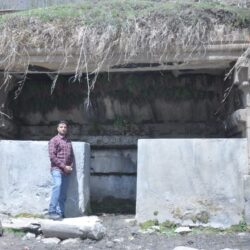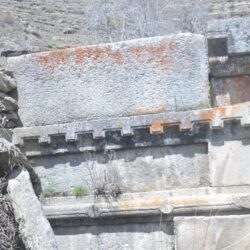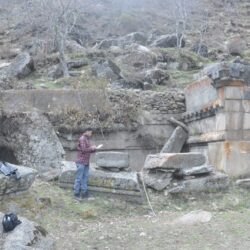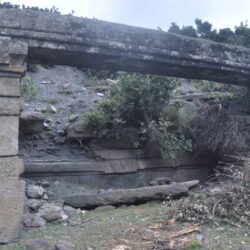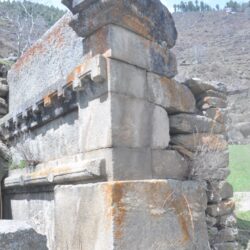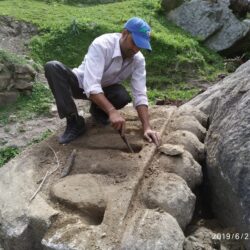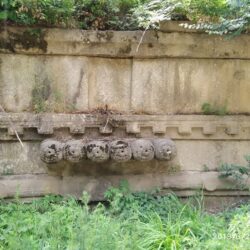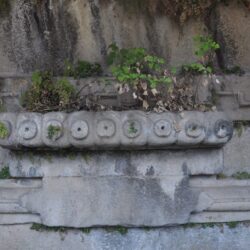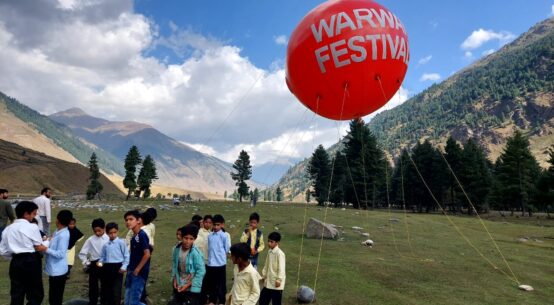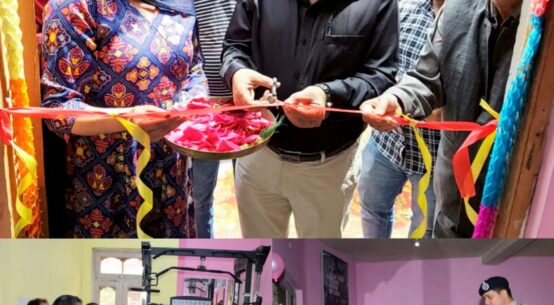
Paddar’s Hidden History: Discovering its Archaeological Treasures
Authored By: Anil Kumar Bhagat
Paddar is one of the remotest areas of district Kishtwar and is a treasure trove of natural beauty and is almost 65KM from district Headquarters. This pious sacred land of Chandi Mata Machail popularly known as Devbhoomi is famous for its shimmering blue coloured stone, popularly known as Sapphire (Neelam) which is found at Sumcham, six kilometers ahead of Machail towards North-East of Paddar. Sub-division Paddar has its own history and the inhabitants here are God fearing and live simple life. This region has preserved its unique culture, traditions, language, attire and all the above their local festivals.
As many Baolies are found in kishtwar and its surroundings similarly, almost every village of Paddar has such Baolies. Name of the villages where one can found these Baolies are Pandail, Massu, Atholi, Ligri, Ghar, Sohal, Tatapani, Chittoo, Uangaie, Tiyari, and Ishatari. Moreover, perhaps there are many more places in Paddar where such Baolies exists, which still unknown to us.
LIGRI
Village Ligri is just above the village Pandail and is the largest village as well as largest Panchayat of Paddar and is almost fourteen kilometers from Gulabgarh towards the north side of Paddar. This village is naturally very beautiful and has vast, plain fields. The soil is very fertile and produces two crops a year. This village is hub of Baolies and we found six Baolies constructed at different locations. The first Baolie was constructed in the middle of the village, but today we found it in very pathetic condition. Whether due to natural causes or human actions, we found it in a dilapidated state today. Upon inspection, we discovered large stones scattered around, suggesting that they had been displaced from their original location. It’s possible that the Baolie was initially constructed elsewhere and the stones were later transported to this site. Notably, we didn’t find any evidence of Non in the surrounding area, leading us to suspect that it may have been destroys. However, based on the size of the stones, it can be established that this Baolies was almost of twenty three feet in length, nine feet in width and also nine to ten feet in height.
The second Baolie is situated below the village nestled amidst the fields, and is in a relatively better state of preservation. Interestingly, there are two baoulies at this location, although one is a severely dilapidated condition. The primary Baolie, however, is a stunning example of architecture. It is twenty four feet and seven inches in length, eight feet and two inches in width and ten feet and ten inches in height. Notably, nine noans have been intricately carved into a single stone, and a stepwell is located beneath it, currently filled with mud. The wall of this Baolie features an impressive carving of an elephant, accompanied by the heads of two bulls, skillfully etched into the large stones. The third Baolie, located at the same place is ten feet in length, six feet in width and also six feet in height.
The fourth Baolies is situated behind the village, adjacent to a stream, and it is undoubtedly the most exquisite Baolie I have encountered thus far. The intricate stonework and carvings on its stone bear a striking resemblance to marble, and I must say that I have never had the privilege of beholding a Baolie as grand and impressive as this one. This Baolies is thirty one feet and five inches in length, ten feet in width and eleven feet and six inches in height. This Baolies has twelve noans carved in a single stone. Length of the noans is of eight feet and nine inches, one foot and ten inches in width and ten inches of height. Undoubtedly, this Baolie supplied water for numerous years, as evident openings, a testament to the relentless flow of water.
The designs on this Baolie exhibit remarkable precision, with uniform gaps of precisely seven and half inches. Furthermore, the large stones used on either side of the base are also impressively uniform, measuring forty inches in length, forty inches in width and thirty nine inches in height. It is likely that this Baolie originally featured a stepwell, now obscured by accumulated soil and stones. The fifth Baolie, situated just below the first, is also relatively in good condition although regrettably, it has been neglected by the locals. This Baolie is fifteen feet and four inches in length, six feet and three inches in width and five feet in height and has four noans carved in a single stone of length two feet and four inches, one foot and two inches of width and seven inches in height. This Baolie is currently dry, but it likely held water until several years ago.
| S.NO. | LENGTH | BREADTH | HEIGHT | COORDINATES |
| 1 | 23.00 | 09.00 | 09.00 | 33⁰18’25”N 76⁰10’49”E.
|
| 2 | 24.7 | 8.2 | 10.10 | 33⁰18’25”N 76⁰10’49”E.
|
| 3 | 10.00 | 6.00 | 6.00 | 33⁰18’25”N 76⁰10’49”E.
|
| 4 | 31.5 | 10.00 | 11.6 | 33⁰12’32”N 76⁰10’42”E.
|
| 5 | 15.4 | 6.3 | 5.0 | 33⁰18’31”N 76⁰10’52”E.
|
| 6 | 21.4 | 7.8 | 9.7 | 33⁰16’01”N76⁰09’53”E.
|
PANDAIL
Village Pandail is located in the north side of Paddar has picturesque beauty. This quaint village is home to three ancient Baolies, each bearing testament to the region’s rich history and cultural heritage. While two of these Baolies have dried up over time, the third remains active, serving as a vital source of water for the local community. The dried-up Baolies, however, have found new purpose as makeshift storage facilities for the villagers’ grass chaff. In contrast, the active Baolie continues to quench the thirst of the locals, providing water for drinking, bathing, and washing. The Baolies in Pandail boast an impressive array of carvings, showcasing the artistic prowess of the region’s ancient craftsmen. These intricate carvings depict a range of Vedic deities, animals, and mythological figures. One notable carving features a male figure seated in meditation, adorned with a headgear and draped in a dhoti. The back wall of the Baolie is adorned with seven carvings of gods and goddesses, including Lord Vishnu, whose likeness is reminiscent of the revered images found in Bimal Baolie Polar and Bhattan. Other notable carvings include Lord Ram accompanied by Devi Sita and Lakshman, as well as a regal lady riding a horse, sword in hand. On the right side of the Baolie, a carving of Lord Hanuman is poised in his traditional stance. Above the Baolie, a stone log bears the image of the Tridevs – Lord Brahma, Lord Vishnu, and Lord Mahesh. A rare and fascinating carving of an elephant is a standout feature of this Baolie. The presence of these intricate carvings, particularly the elephant, raises questions about the origins of the artisans who created them. It is likely that the artisans were either from outside the region or had traveled to the Indian plains, where they would have encountered elephants and been inspired to immortalize them in stone. The Baolies of Pandail serve as a testament to the region’s rich cultural heritage and the artistic prowess of its ancient inhabitants. As a window into the past, these ancient structures continue to captivate and inspire, offering a glimpse into a bygone era of beauty, craftsmanship, and devotion.
Dimensions of the Baolies found at Pandail Village.
| S.NO. | LENGTH | BREADTH | HEIGHT | COORDINATES |
| 1 | 13.30 | 05.50 | 08.00 | 33⁰17’27”N 76⁰10’48”E. |
| 2 | 11.00 | 06.00 | 08.00 | 33⁰17’27”N 76⁰10’48”E. |
| 3 | 16.20 | 07.00 | 06.80 | 33⁰17’27”N 76⁰10’48”E. |
SHUCHOOL:
Tucked away in the southern reaches of Paddar, Shuchool is a treasure trove of history, culture, and natural beauty. This picturesque village is home to the first Airtel mobile tower, erected to connect the region to the world. At the heart of Shuchool lies the ancient and revered temple of Mata Sheetla, a magnet for tourists and devotees alike. Every year, on the eve of Baisakhi, the village comes alive with a vibrant mela, celebrating the region’s rich cultural heritage.
Shuchool is home to three ancient Baolies, each a testament to the region’s engineering prowess and artistic flair. The first Baolie, situated just above the temple, stands out for its unique features. Measuring 13 feet 4 inches in length, 6 feet 5 inches in width, and 7 feet 4 inches in height, this Baolie boasts five beautifully carved noans in a single stone. What sets this Baolie apart is the intricate carving of a swan on its stone façade – a rare find in Paddar and beyond. On the right side of the Baolie, three images of horses are etched into the stone, including one of a man riding a horse. Two more Baolies can be found on the way to the temple, each a masterpiece of miniature architecture. While not as large as the first Baolie, these two structures are almost identical in size and shape. The first Baolie measures 8 feet in length, 4 feet 2 inches in width, and 6.5 feet in height, while the second Baolie measures 6 feet in length, 5 feet 9 inches in width, and 6.5 feet in height. Both Baolies feature three noans each and small, beautiful step wells. According to local lore, these stone structures were built by the ancestors of Paddar inhabitants in memory of their deceased loved ones, centuries ago. This poignant tradition underscores the region’s deep respect for its heritage and its people. In Shuchool, the past and present blend seamlessly, inviting visitors to experience the authentic charm of Paddar.
SOHAL
Sohal is a charming village situated on the Paddar-Keylong road, approximately 11 kilometers from Gulabgarh. With coordinates 33⁰12’59”N 76⁰12’55”E, this village is nestled in a stunning landscape. The villagers have adapted to the rugged terrain, building their homes on the slopes of the adjacent mountain. The village is surrounded by a vast plain, utilized for agriculture, where crops are grown once a year. A significant landmark in Sohal is the ancient Kali Mata Mandir, situated above the road. This revered temple was built by a king and continues to be a sacred site for the villagers. The village is also home to three Baolies, ancient stone structures believed to have been built by the Pandavas.
The first Baolie, located in the village center, serves as a source of water for household purposes. The second Baolie, although damaged, still has flowing water, while only a few stones remain. The third Baolie situated half a kilometer behind the village, lies in disrepair, with most of its stones scattered around. A massive log-type stone, approximately 12-13 feet long, rests atop the Baolie, featuring eight intricately carved Noans in a single stone.
Unfortunately, these Baolies have suffered damage, likely due to human neglect or natural processes. The villagers have filled some stones into the Baolie, intending to occupy the space. If left unattended by local authorities, these ancient structures risk disappearing over time. Efforts are necessary to preserve these historical treasures and maintain the cultural heritage of Sohal.
DHOOLA NALLHA (NEAR LEONDI)
Near Dhoola Nallah in Leondi, lies a breathtakingly beautiful Bavali that showcases the exceptional craftsmanship of the region’s ancient stonemasons. This impressive structure measures 10 feet in height, 10 feet in width, and 30 feet in length, boasting ten intricately carved noans fashioned from a single stone.
The carvings that adorn this Bavali are truly exquisite, reflecting the artistic flair of the region’s ancient craftsmen. A massive stone on the roof features an intricate cycle design reminiscent of the Dharma Chakra, complete with twenty-three spokes. This design bears a striking resemblance to the two cycles discovered in Leondi. What sets this Bavali apart is the presence of a massive 30-foot-long stone on its roof, featuring holes on both sides. These holes were likely designed to facilitate the placement of the stone using ropes. The use of larger stones in this Bavali distinguishes it from other Baolies in the region. On the back wall of the Bavali, a picture of Lord Hanuman ji has been carved, although it appears to have been added at a later date. This Bavali continues to be a functioning water source, with a small amount of water flowing from almost all the pipes. A short walk north of this Bavali reveals the remnants of another structure that was recently demolished. The stones from this demolished Bavali lie scattered along the path. Upon closer inspection, it becomes apparent that six noans were carved into a single massive stone, showcasing the skillful craftsmanship of the region’s ancient stonemasons. The noans were designed to distribute water evenly, a testament to the engineering prowess of the region’s ancestors.
SHINGAOU
Nestled near Tatti, Paddar lays the village of Shingaou, home to a stunningly beautiful Bavari. Situated above the road, this ancient structure boasts intricate carvings that reflect the region’s rich cultural heritage. The Bavari stands at an impressive 10 feet high, 6 feet wide, and 15 feet long, with stones on either side mirroring each other in size and shape. The rear wall of the structure features beautifully carved stones, adorned with designs reminiscent of those found in other Bavaries. Six noans, carved from a single stone, are embedded in the rear wall of the Bavari, each adorned with delicate flower carvings on the front. Although the Baolies roof has succumbed to the ravages of time, its remains are nowhere to be found, leaving behind only the foundation. On the left side of the wall, a carving of two birds adds to the Baolies charm. While water no longer flows from the noans, they once served as a functioning water source. Holes on the rear wall stones suggest that they may have been used to drag the stones into place. Shingaou Bavari stands as a poignant reminder of the region’s rich cultural heritage and the exceptional craftsmanship of its ancestors. Despite the passage of time, this ancient structure continues to captivate and inspire, offering a glimpse into a bygone era of beauty and precision.
As we stand at the crossroads of time, I fervently appeal to the Kishtwar administration and the local authorities of Paddar to recognize the immense historical significance of these ancient monuments. It is imperative that we join forces to implement meticulous preservation measures, ensuring the protection and longevity of these cultural treasures for generations to come. Furthermore, I extend a heartfelt invitation to the local residents, who are the custodians of this rich heritage, to collaborate with us in safeguard their precious relics. Together, let us embark on a journey to preserve the essence of our collective past, and in doing so, forge a brighter future that honors the memories of our ancestors.
Authored by: ANIL KUMAR BHAGAT
Mobile: 7051350159
Email: anilk11111982@gmail.com
Disclaimer: This article presents the author’s personal research and interpretation of historical events. www.mykishtwar.com provides this platform for the dissemination of information and diverse perspectives. The accuracy, completeness, and validity of any statements made within this article are solely the responsibility of the author. The content of this article is the sole responsibility of the author. www.mykishtwar.com does not assume any liability for the information presented. The author’s views and opinions do not necessarily represent those of www.mykishtwar.com. Readers are encouraged to conduct their own research and verify the information presented.
